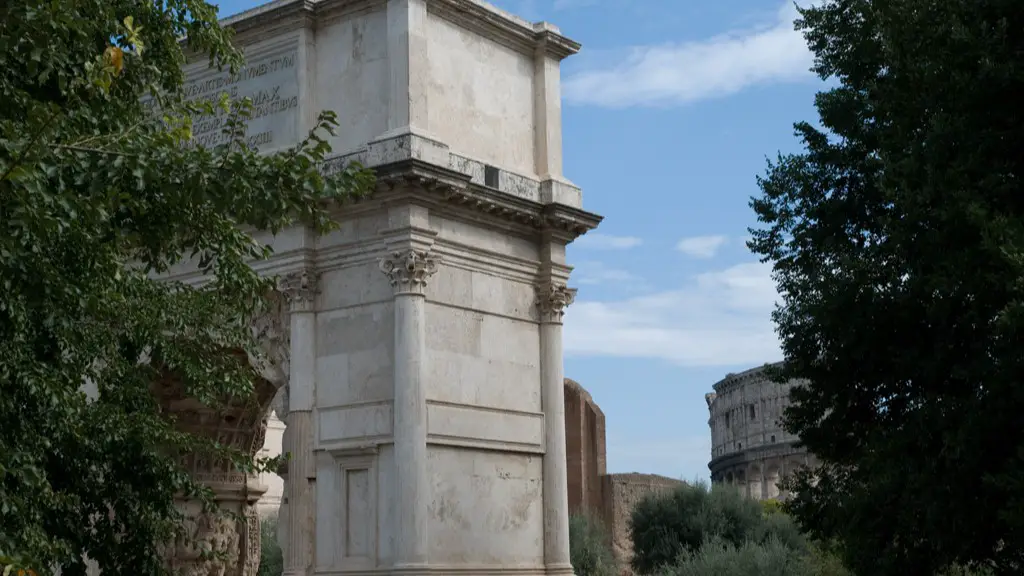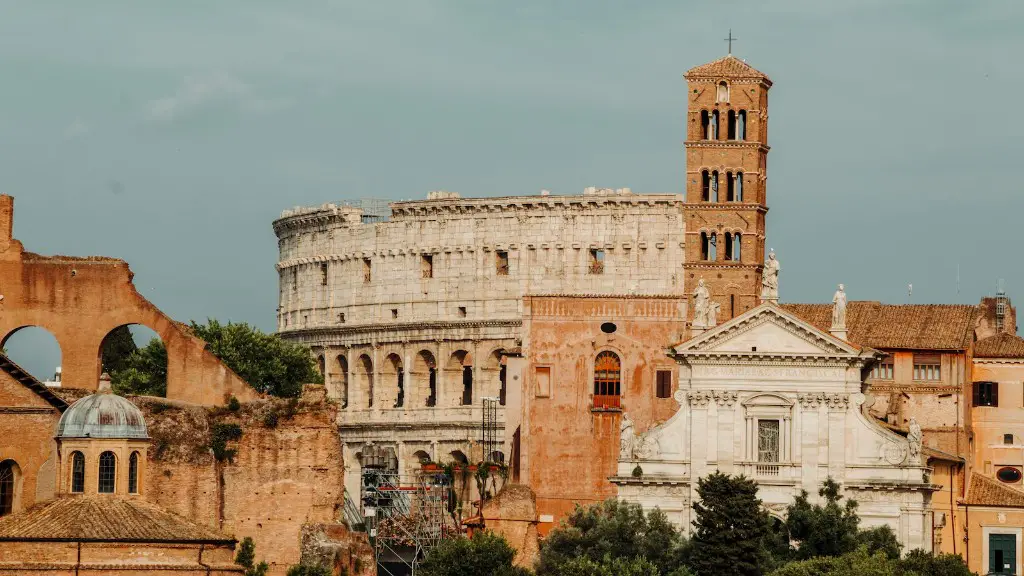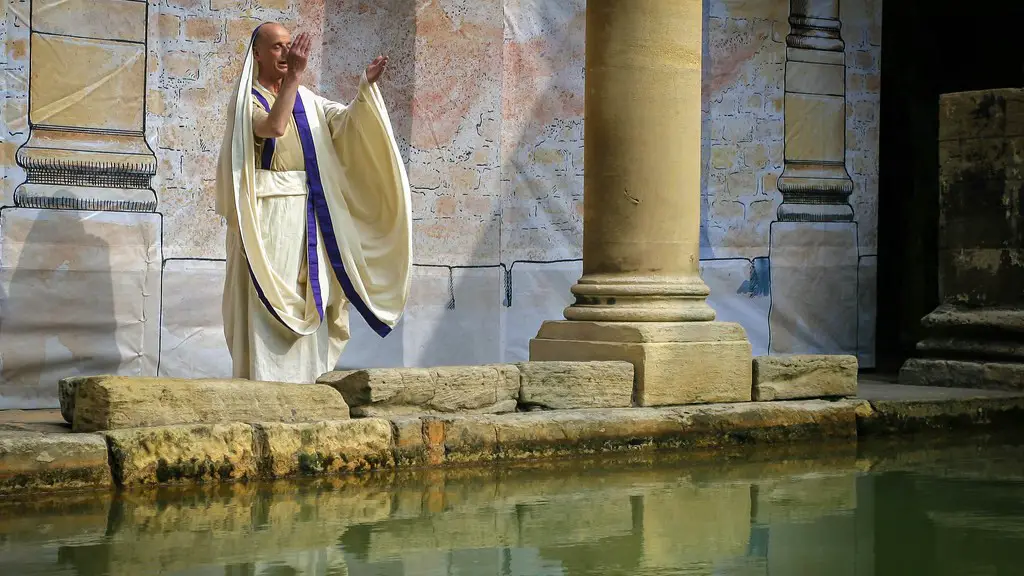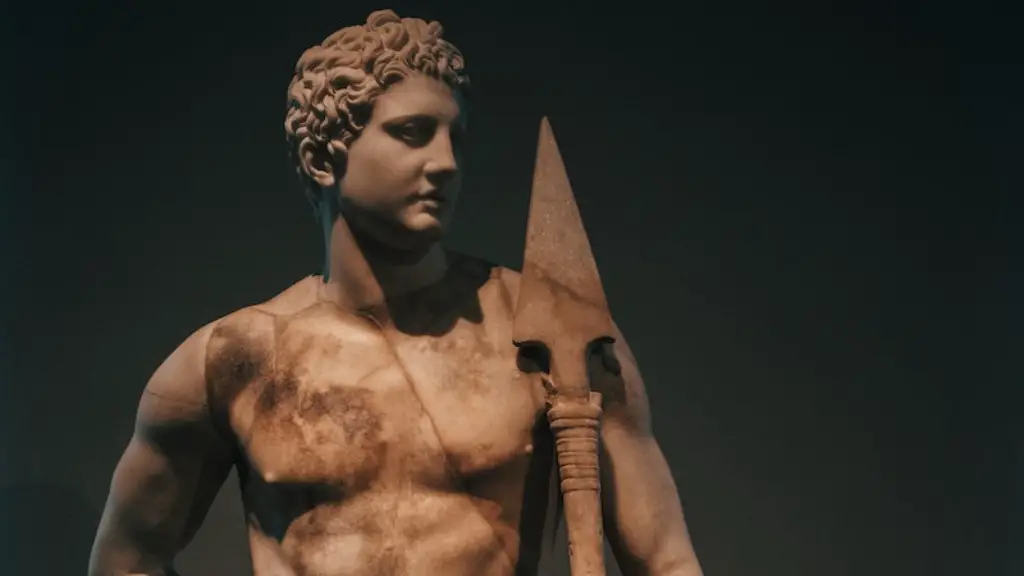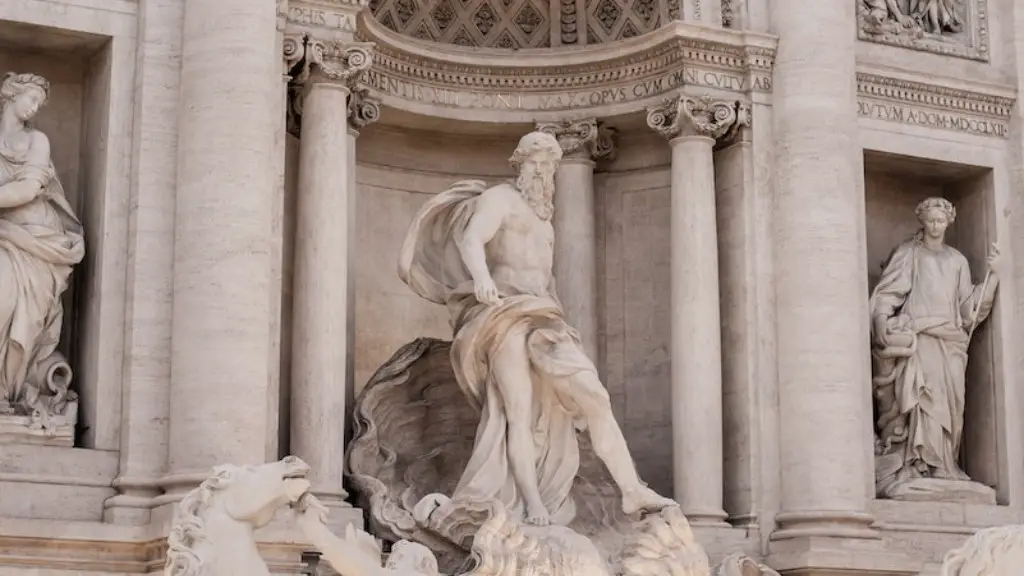Ancient Rome is renowned for numerous inventions and customs, and one of many is the use of vaults. But what are vaults, and what were they used for in Ancient Rome? Read on to find out.
Vaults were arched structures made from stone or brick which were built as roofs or as supporting structures for walls. As vaults were able to support considerable weight, they were used to build large structures such as aqueducts, bridges and roads, as well as fortifications, temples and public buildings. They could also be used to create ceilings and covered walkways, and were even employed in the construction of sewer systems in Ancient Rome.
Vaults served a very practical purpose in Ancient Rome, and offered many advantages, such as more strength and reliability than wooden roofs, and increased fire resistance, as well as improved defense. As a result, vaults were widely employed in the city, with many buildings still standing today that were constructed using vaults.
In addition to their practical functions, vaults were also used to create spectacular and innovative architectural features. Vaults could be used to create complex multi-story buildings, in which upper level balconies or walkways were supported by arches. Furthermore, vaults were often combined with other materials such as carved stone or marble to create an aesthetic that remains admired today.
The use of vaults enabled Ancient Romans to construct buildings which were larger and more complex than was possible with previous methods, and they remain an important symbol of the ingenuity and craftsmanship of the Roman people. It is clear that in Ancient Rome, vaults were used for both practical and aesthetic purposes.
Vaults in the House
Vaults could also be found within private homes, where they could be used for a variety of tasks. Vaults often served as storage spaces for food, including grains, wine and oil, but also for a range of other valuables.
Vaults could also be used as an area for guests to congregate, with examples being found in the homes of wealthier citizens. Furthermore, certain vaults could also be used for bathing, as many Ancient Roman baths were elaborately constructed with vaults.
Vaults and the Colosseum
Of course, one of the most famous examples of the use of vaults in Ancient Rome is the Colosseum. This iconic structure, whose original name was the ‘Amphitheatrum Flavium’, was built in 79 AD and took almost 10 years to complete. The Colosseum is estimated to have been comprised of over 80 arcades and 80 vaults, and stands as a testament to the engineering skill of the Roman people.
In addition to its practical and structural uses, the Colosseum’s vaults also had an aesthetic purpose. Intricately decorated with marble, there are an estimated 300 carvings which adorn the vaults and make them some of the most spectacular pieces of Roman architecture.
Vaults and the Roman Forum
The Roman Forum is another example of how the use of vaults could create impressive and iconic buildings. The Forum has many examples of vaults, including domed temple roofs, covered walkways and archways, as well as an enormous basilica. These structures demonstrate the prowess of the Romans for constructing large-scale, powerful and impressive structures.
Vaults were also used in many other buildings, as well as in the city’s aqueducts and systems of roads. The use of vaults enabled the Romans to create structures that could cope with the strain of large crowds and heavy traffic, something which stands as a lasting tribute to their engineering skills.
Vaults and Monumental Tombs
Vaults were also used to create large and magnificent tombs, often for wealthy and powerful individuals. These tombs featured domed roofs and intricate carvings, some of which were made to be as tall as two men. These monuments were intended to show the wealth and power of their occupants as well as symbolizing their connection to the gods in Ancient Rome. As such, these vaults served an important ideological and cultural role, as well as providing practical purposes.
Vaults and Funeral Rituals
Vaulted buildings could also be used for funeral rituals and other ceremonies. Examples of these can be found in underground rooms which had vaults as ceilings, and some of these were known as a ‘cultus loca’ by the Romans. These spaces were used for public ceremonies and funeral rites, and featured a variety of sculptures, paintings and carvings. These vaults served a range of functions, from religious purposes to practical, and remain testament to the scale and variety of ceremonies held in Ancient Rome.
Vaults and the Roman Army
Vaults were also used by the Roman army for a variety of purposes, from storage of arms and supplies, to secure areas for officers and soldiers. Vaults were also used to construct fortifications and walls, which were often also decorated with carving. Furthermore, vaults were used in catacombs, where the remains of soldiers and officers who had died in battle were buried.
Vaults and Aqueducts
Vaulted walls and arches were widely used in the construction of aqueducts, which served a vital purpose in Ancient Rome. Aqueducts carried water to the city from distant sources, adding to the density and prosperity of the population. Furthermore, the engineering skill of the Romans was demonstrated through the construction of aqueducts which feature vaults and bridges which span River Tiber, and remain an impressive example of the greatness of Roman engineers.
Vaults and Public Baths
Public baths were also a feature of Ancient Rome, and vaults were employed to construct the bathing areas of these buildings. Vaults allowed for natural light to enter the room, and facilitated ventilation, making these areas cool and pleasant areas to spend time. The baths also featured a variety of sculptures and grandeur furnishings, and often doubled up as leisure and social centres, where Romans could relax, talk and enjoy each other’s company.
Vaults, Religion and Beliefs
The use of vaults also had a role to play in the spiritual life of the Ancient Romans, with vaults often being used to construct religious places of worship. Examples of this are the Temple of Saturn, or the Pantheon, which featured an iconic dome, both of which stand testimony to the belief and faith of the Romans. Furthermore, vaults were also used to construct underground temples where people could go to pay their respects to the gods.
Vaults and the Economy
Vaults had a significant effect on the economy of Ancient Rome, as the construction of vaults and other structures such as courtyards and basilicas provided people with employment opportunities. In addition, the presence of large structures made from vaults allowed the city to expand rapidly, which created more opportunities for business, trade and commerce, thus strengthening the economy.
Vaults in Architecture
Vaults are still used in architecture today to create impressive, innovative and aesthetic structures. They are often used in combination with other materials, making them a versatile tool in the creation of inspiring buildings. Vaults can also be used to create energy efficient and sustainable buildings, as they act as an insulator and can store large amounts of heat. Therefore, it is clear that vaults have had a lasting impact on architecture both in the past and the present.
